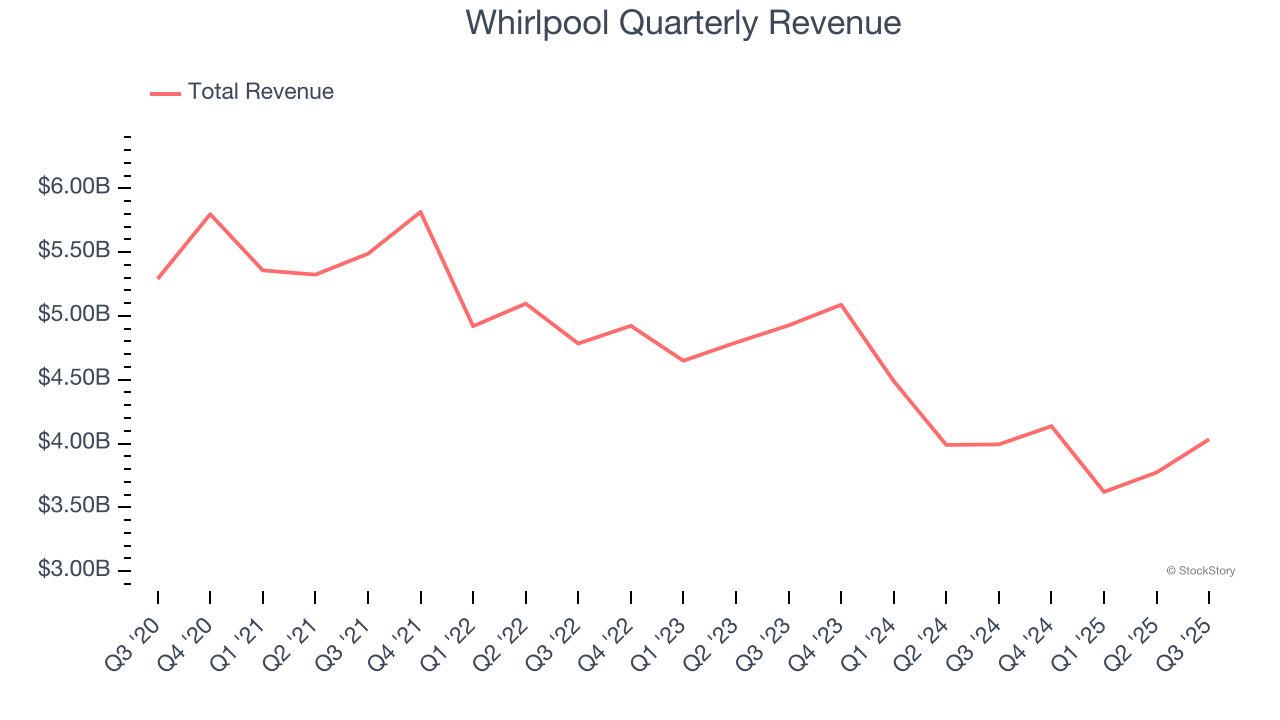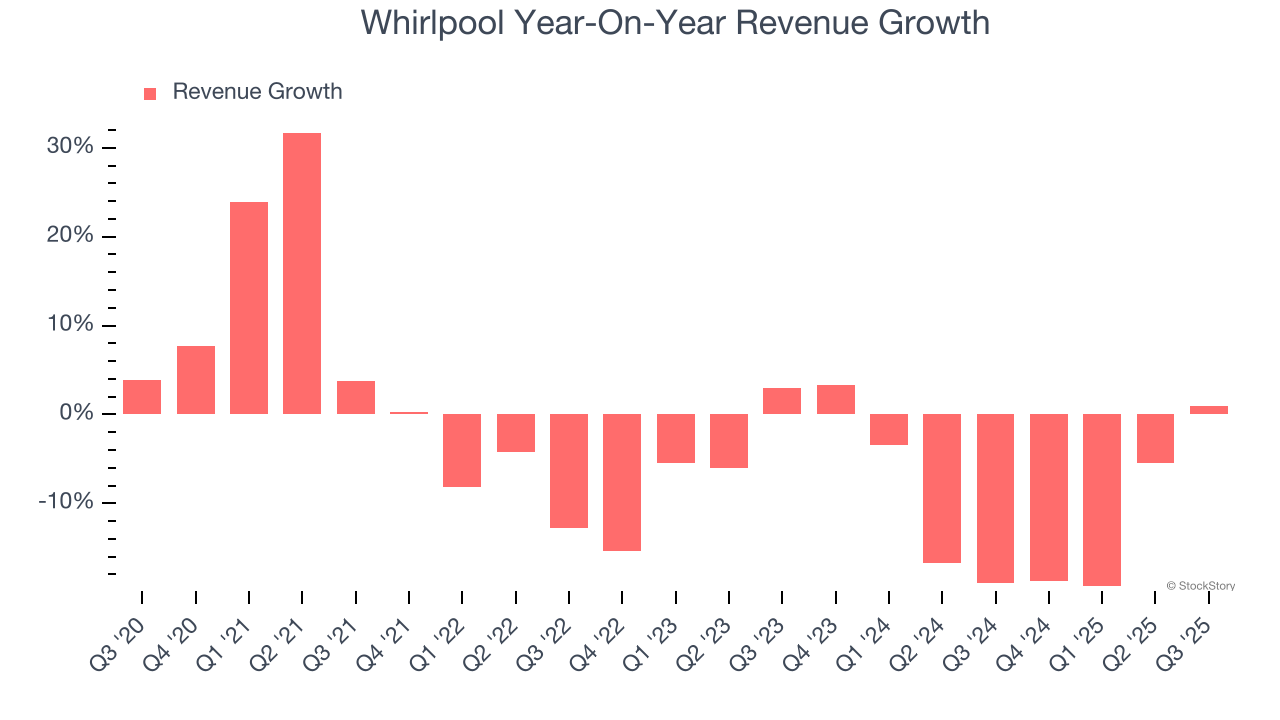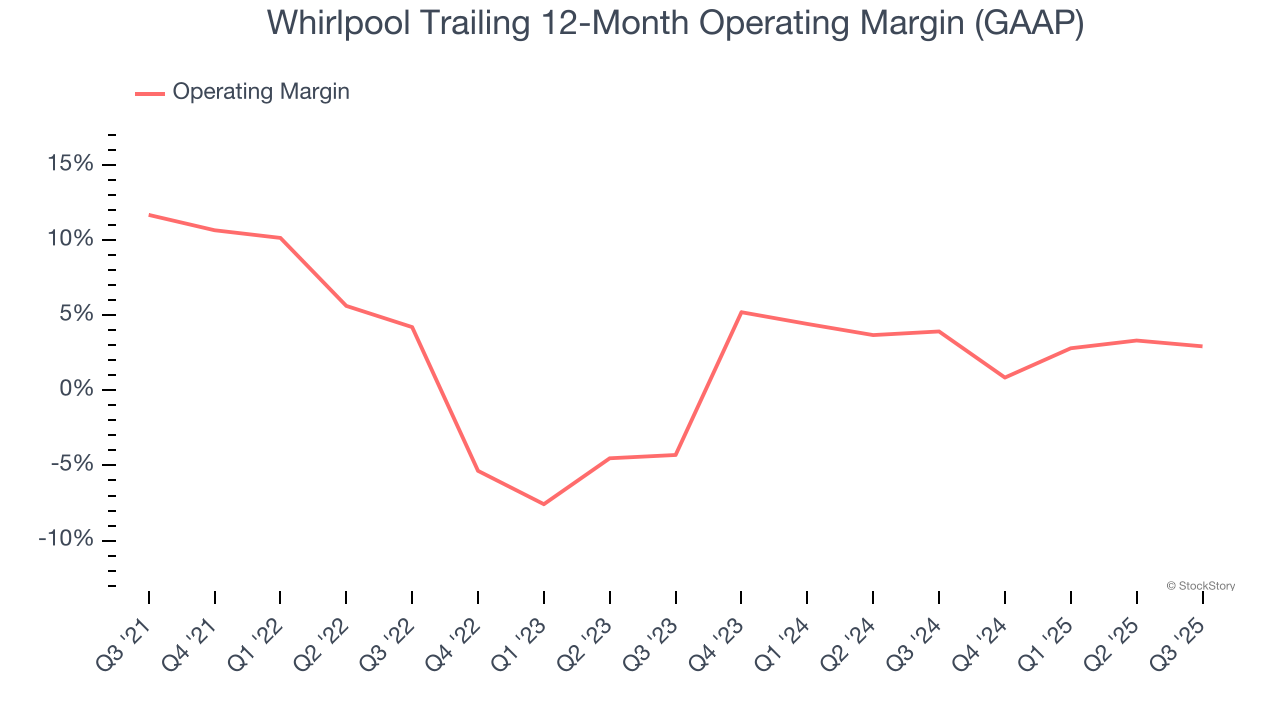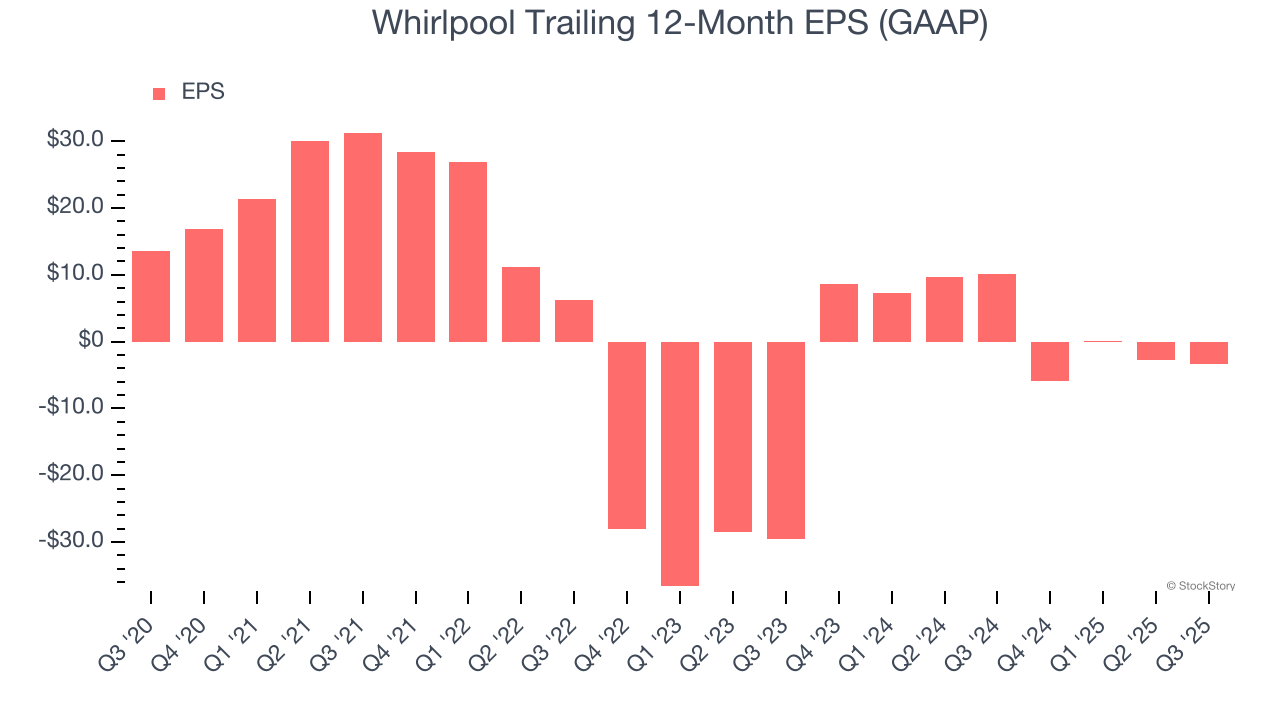
Home appliances manufacturer Whirlpool (NYSE: WHR) reported Q3 CY2025 results beating Wall Street’s revenue expectations, with sales up 1% year on year to $4.03 billion. The company’s full-year revenue guidance of $15.8 billion at the midpoint came in 1.9% above analysts’ estimates. Its GAAP profit of $1.29 per share was 5.1% above analysts’ consensus estimates.
Is now the time to buy Whirlpool? Find out by accessing our full research report, it’s free for active Edge members.
Whirlpool (WHR) Q3 CY2025 Highlights:
- Revenue: $4.03 billion vs analyst estimates of $3.93 billion (1% year-on-year growth, 2.5% beat)
- EPS (GAAP): $1.29 vs analyst estimates of $1.23 (5.1% beat)
- Adjusted EBITDA: $289 million vs analyst estimates of $283.6 million (7.2% margin, 1.9% beat)
- The company reconfirmed its revenue guidance for the full year of $15.8 billion at the midpoint
- EPS (GAAP) guidance for the full year is $6 at the midpoint, beating analyst estimates by 9.5%
- Operating Margin: 5.1%, down from 6.6% in the same quarter last year
- Free Cash Flow was -$52 million, down from $127 million in the same quarter last year
- Market Capitalization: $4.12 billion
Company Overview
Credited with introducing the first automatic washing machine, Whirlpool (NYSE: WHR) is a manufacturer of a variety of home appliances.
Revenue Growth
A company’s long-term performance is an indicator of its overall quality. Even a bad business can shine for one or two quarters, but a top-tier one grows for years. Whirlpool’s demand was weak over the last five years as its sales fell at a 4% annual rate. This wasn’t a great result and is a sign of poor business quality.

We at StockStory place the most emphasis on long-term growth, but within industrials, a half-decade historical view may miss cycles, industry trends, or a company capitalizing on catalysts such as a new contract win or a successful product line. Whirlpool’s recent performance shows its demand remained suppressed as its revenue has declined by 10.2% annually over the last two years. Whirlpool isn’t alone in its struggles as the Electrical Systems industry experienced a cyclical downturn, with many similar businesses observing lower sales at this time. 
This quarter, Whirlpool reported modest year-on-year revenue growth of 1% but beat Wall Street’s estimates by 2.5%.
Looking ahead, sell-side analysts expect revenue to decline by 1.2% over the next 12 months. While this projection is better than its two-year trend, it’s hard to get excited about a company that is struggling with demand.
Here at StockStory, we certainly understand the potential of thematic investing. Diverse winners from Microsoft (MSFT) to Alphabet (GOOG), Coca-Cola (KO) to Monster Beverage (MNST) could all have been identified as promising growth stories with a megatrend driving the growth. So, in that spirit, we’ve identified a relatively under-the-radar profitable growth stock benefiting from the rise of AI, available to you FREE via this link.
Operating Margin
Whirlpool was profitable over the last five years but held back by its large cost base. Its average operating margin of 4% was weak for an industrials business. This result isn’t too surprising given its low gross margin as a starting point.
Analyzing the trend in its profitability, Whirlpool’s operating margin decreased by 8.8 percentage points over the last five years. Whirlpool’s performance was poor no matter how you look at it - it shows that costs were rising and it couldn’t pass them onto its customers.

In Q3, Whirlpool generated an operating margin profit margin of 5.1%, down 1.5 percentage points year on year. Since Whirlpool’s operating margin decreased more than its gross margin, we can assume it was less efficient because expenses such as marketing, R&D, and administrative overhead increased.
Earnings Per Share
We track the long-term change in earnings per share (EPS) for the same reason as long-term revenue growth. Compared to revenue, however, EPS highlights whether a company’s growth is profitable.
Sadly for Whirlpool, its EPS declined by 17.6% annually over the last five years, more than its revenue. This tells us the company struggled because its fixed cost base made it difficult to adjust to shrinking demand.

Diving into the nuances of Whirlpool’s earnings can give us a better understanding of its performance. As we mentioned earlier, Whirlpool’s operating margin declined by 8.8 percentage points over the last five years. This was the most relevant factor (aside from the revenue impact) behind its lower earnings; interest expenses and taxes can also affect EPS but don’t tell us as much about a company’s fundamentals.
Like with revenue, we analyze EPS over a more recent period because it can provide insight into an emerging theme or development for the business.
For Whirlpool, its two-year annual EPS growth of 66.2% was higher than its five-year trend. Its improving earnings is an encouraging data point, but a caveat is that its EPS is still in the red.
In Q3, Whirlpool reported EPS of $1.29, down from $1.97 in the same quarter last year. Despite falling year on year, this print beat analysts’ estimates by 5.1%. Over the next 12 months, Wall Street is optimistic. Analysts forecast Whirlpool’s full-year EPS of negative $3.37 will flip to positive $6.45.
Key Takeaways from Whirlpool’s Q3 Results
We were impressed by Whirlpool’s optimistic full-year EPS guidance, which blew past analysts’ expectations. We were also glad its revenue outperformed Wall Street’s estimates. Zooming out, we think this was a solid print. The stock remained flat at $73.69 immediately after reporting.
Big picture, is Whirlpool a buy here and now? We think that the latest quarter is only one piece of the longer-term business quality puzzle. Quality, when combined with valuation, can help determine if the stock is a buy. We cover that in our actionable full research report which you can read here, it’s free for active Edge members.





